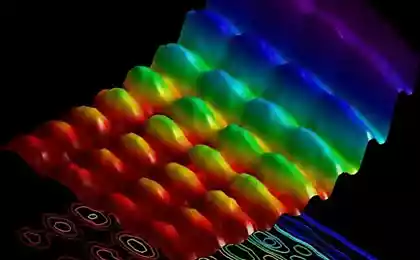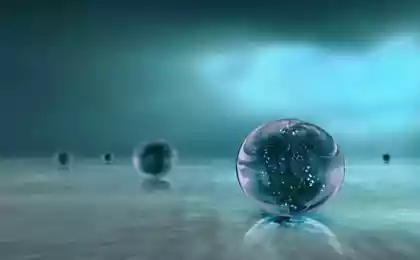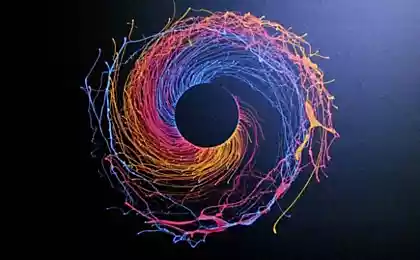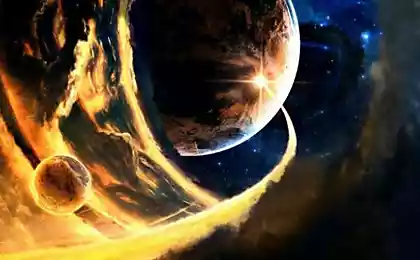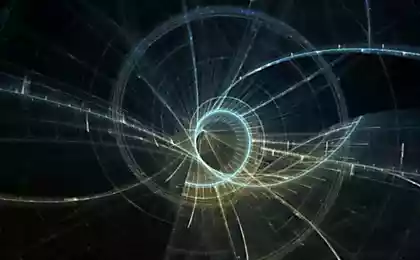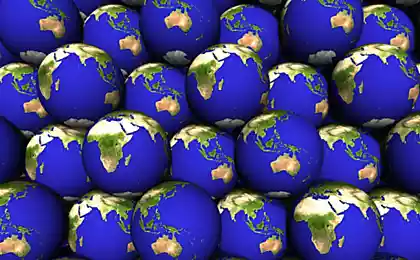667
Whether quantum gravity string theory?
"I just think that in string theory there are too many good things that it was completely wrong. People don't grasp it very well, but I just don't believe in the giant cosmic plan that created this incredible thing, and that it had nothing to do with the real world", once said Edward Witten.
Without a doubt, from a mathematical point of view, there is no shortage of incredible, beautiful, and elegant theories. But not all are suitable for our physical Universe. It seems that for every brilliant idea that accurately describes what we can observe and measure, we have at least one brilliant idea that tries to describe the same thing, but it remains fundamentally wrong. Last week we asked the question, which boils down to roughly the following fact.
Quantum gravity. We would like to know if there is any progress in this area over the last five to ten years. We, ordinary mortals, it seems that this area is a little pozostale, and string theory began to fall into oblivion because it is hard to test and it has 10^500 possible solutions. Is this true, or somewhere behind the scenes is leaking some progress, on which the press just not paying attention?
First, it is worth to spend a big dividing line between the idea of quantum gravity, the solution of string theory (or proposed solution) and other alternatives.
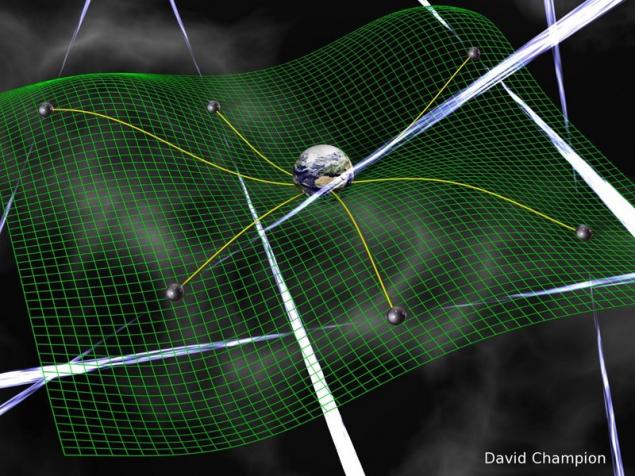
Let's start with the Universe that we know and love. On the one hand, there is the General theory of relativity, our theory of gravity. She claims instead to be a simple action at a distance, as bequeathed to Newton, when all masses in all areas exert force on each other inversely as the square of the distance between them, it is based on a more subtle mechanism.
Weight, as established by Einstein with the principle of equivalence and E=mc^2 in 1907, was one of the forms of energy in the Universe. This energy, in turn, distorts the very fabric of space-time, changing the path of motion of all objects and changing what the observer could observe in the form of a Cartesian grid. Objects do not accelerate at the expense of invisible forces, but rather travel along the path defined by the influence of all the various forms of energy in the Universe.
It's the gravity.
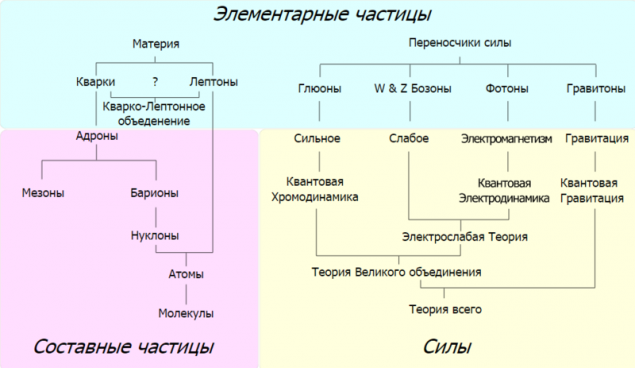
On the other hand, we have other laws of nature: quantum. There is electromagnetism, which is responsible for electrically charged particles, their movement and which describes the vector of force by the photon, which mediates these interactions and gives us the phenomena which we associate with electrostatics and magnetism. There are also two nuclear forces: the weak nuclear force, responsible for phenomena like radioactive decay and the strong nuclear force that holds atomic nuclei together and allow for the existence of protons and neutrons.
The calculations for these forces generally occur in flat space-time with which each student begins the study of quantum field theory. But it's not enough when we are in curved space, as dictated by General relativity theory.

"So, you say, — we need to calculate our field theory in the background curved space!". This is known as semiclassical gravity, and this type of computing allows us to count things like Hawking radiation. But even that is only on the horizon of the black hole itself, and not where gravity is in all its glory. There are many physical cases in which we could use the quantum theory of gravity, and they are all connected with the gravitational physics on the smallest scale, in tiny distances.
What, for example, occurs in the Central regions of black holes? You might think like, "Oh, there's also the singularity", but the singularity is not so much a point with infinite density, as the case where the mathematical tool of the General relativity theory gives nonsensical answers to questions about the potentials and forces. What happens when an electron passes through a double slit? Does a gravitational field through both slits? Or using one? General relativity says nothing on this score.
It is believed that there must be a quantum theory of gravity that explains these and other problems inherent in the "smooth" theory of gravity like General relativity. To explain what happens at small distances in the presence of gravitational sources — or the masses — we need a quantum, discrete, and, therefore, built on the particle theory of gravity.
Thanks to the properties of the OTO, something we already know.
Known quantum forces are determined by the particles known as bosons, or particles with integer spin. Photons define the electromagnetic force, W and Z bosons are mediators for weak nuclear force, and gluons for the strong nuclear force. All these particles of spin equal to 1, and for massive particles of spin can take the value -1, 0 or +1, whereas the massless particles (like gluons and photons) it can take only the value -1 or +1.
The Higgs particle is also a boson, not only acts as an intermediary for the forces and has spin 0. How we know gravity — General relativity is a tensor theory of gravity, its mediator must be a massless particle with spin 2, and thus its spin can take the value -2 or +2 only.
It turns out, we know something about quantum theory of gravity before even attempting to articulate it. We know this because whatever quantum theory of gravity, it must be in accordance with General relativity, when we're dealing with the smallest distances to massive particles or objects, and General relativity should be reduced to Newtonian gravity in the weak field regime.
The big question, of course, how to do it. How to quantize gravity that it was correct (the description of reality), were correlated with gr and QFT, and that led to the computed predictions of new phenomena that can be observed, measured or provereny.
The leading candidate, as you know, it's string theory.
String theory
String theory is an interesting field that includes all the standard model fields and particles, fermions and bosons. It includes a 10-dimensional tensor-scalar theory of gravity: from 9 spatial and 1 temporal dimension and the parameter of the scalar field. If we remove six of the spatial dimensions (through the not well understood process that people call compactification) and let the parameter (ω), which determines the scalar interaction, to go to infinity, we can recover General relativity.
However, in string theory there are a number of phenomenological problems. One of them is that the theory implies a huge number of new particles, including supersymmetric and all that we still have not found. She argues that there is no need to "free parameters", which has the Standard model (of particle masses), but replaces this problem even worse. When we talk about 10^500 possible solutions, these solutions apply to the expected values of string fields, and no mechanism to restore them; to string theory to work, you will have to give up dynamics and just say that "she had to be chosen anthropic".
However, string theory is not the only player in this field.

Loop quantum gravitating predstavlyate an interesting look at the problem: instead of trying to quantize particles, PCG argues that space itself is discrete. As the usually present gravity: a stretched sheet with a bowling ball in the center. We also know that usually the sheet is quantized, i.e. composed of molecules which consist of atoms which consist of nuclei (quarks and gluons) and electrons.
Space may be the same! Because it acts as a fabric, it consists of a finite quantized elements. And, perhaps, woven from "loops", the origin of its name. Connect these loops together and you will get a network representing the quantum state of the gravitational field. According to this picture, the quantized not just matter, but space itself. This scientific area is still actively being developed.
Asymptotically safe gravity
Asymptotic freedom was developed in the 1970-ies to explain the unusual nature of the strong interaction: it was a very weak force at very short distances, which becomes stronger to the extent that, as charged particles dispersed on and on. Unlike electromagnetism, which had a small coupling constant, the strong interaction it was big. Due to some interesting properties of quantum chromodynamics, if you contact with a neutral (color) system, the strength of the interaction drops rapidly. It could be explained by the physical size of baryons (protons and neutrons, for example) and mesons (pions, for example).
Asymptotic freedom, on the other hand, has solved the fundamental problems associated with this: you need a small interaction, connection (or connections that tend to zero), but rather relationships that will just end in high-limit. All of the coupling constant change with energy, and asymptotic freedom puts high-energy fixed point for the constant (technically, group renomirani, from which is extracted the coupling constant), and everything else you can expect to lower energies.
Anyway that's the idea. We figured out how to do this for dimensions 1 + 1 (one spatial and one temporal), but not for 3 + 1. However, the progress is moving, largely thanks to Christoph Wetterich, who has published two great works in the 90-ies. Not so long ago Wetterich used asymptotic freedom — just six years ago, to calculate the prediction of the mass of the Higgs boson before the LHC found it. The result?
Surprisingly, his prediction perfectly coincided with the findings of the TANK. It is so wonderful prediction that, if asymptotic safety is correct and the mass of the top quark, W boson and Higgs boson is definitively established, for stable operation up to the Planck quantities in physics do not need other fundamental particles.
Although asymptotically safe gravity is not paying much attention, it remains highly attractive and promising theory, like string theory successfully quantize gravity, General relativity reduces to the limit of low energy and remains UV nite. In addition, it bypasses the string theory one parameter: there is a mountain of new material that we can't prove yet.
Causal dynamic triangulation
This idea is fairly new and was developed in 2000 by Renata Loll in collaboration with other scientists. It converges with loop quantum gravity is that space is discrete, but primarily was concerned with how this space is evolving. One of the interesting features of this idea that time must be discrete. In the end we get four-dimensional space-time in the present, but at very high energies and small distances (Planck scale), it manifests itself in the form of a two-dimensional structure. It is based on a mathematical structure called a simplex, which is the n-dimensional generalization of a triangle. 2-simplex is a triangle, 3-simplex a tetrahedron and so on. One of the "beautiful" chips that manifests itself in the form of causality is known to many concepts — which is stored in the causal dynamical triangulation. She might be able to explain gravity, but it is not clear 100%, will these frames fit the Standard model of elementary particles.
Emergent (induced) gravity
Perhaps the most controversial of the latest theories of quantum gravity is entropic gravity, as proposed by Eric specific for in 2009, according to the model where gravity is not fundamental force, but rather occurs as a phenomenon associated with entropy. In fact, the roots of emergent gravity go to the discoverer of the conditions of formation of the asymmetry of matter-antimatter, Andrei Sakharov, who proposed this idea back in 1967. Work is still in its infancy, but over the last 5-10 years in this field has made some progress.
That's what we have to date is quantum gravity. We are confident that without it we will not understand the work of the Universe at a fundamental level, but have no idea in which direction from the submitted five (and other) movement is correct. published
P. S. And remember, only by changing their consumption — together we change the world! ©
Source: hi-news.ru
Without a doubt, from a mathematical point of view, there is no shortage of incredible, beautiful, and elegant theories. But not all are suitable for our physical Universe. It seems that for every brilliant idea that accurately describes what we can observe and measure, we have at least one brilliant idea that tries to describe the same thing, but it remains fundamentally wrong. Last week we asked the question, which boils down to roughly the following fact.
Quantum gravity. We would like to know if there is any progress in this area over the last five to ten years. We, ordinary mortals, it seems that this area is a little pozostale, and string theory began to fall into oblivion because it is hard to test and it has 10^500 possible solutions. Is this true, or somewhere behind the scenes is leaking some progress, on which the press just not paying attention?
First, it is worth to spend a big dividing line between the idea of quantum gravity, the solution of string theory (or proposed solution) and other alternatives.

Let's start with the Universe that we know and love. On the one hand, there is the General theory of relativity, our theory of gravity. She claims instead to be a simple action at a distance, as bequeathed to Newton, when all masses in all areas exert force on each other inversely as the square of the distance between them, it is based on a more subtle mechanism.
Weight, as established by Einstein with the principle of equivalence and E=mc^2 in 1907, was one of the forms of energy in the Universe. This energy, in turn, distorts the very fabric of space-time, changing the path of motion of all objects and changing what the observer could observe in the form of a Cartesian grid. Objects do not accelerate at the expense of invisible forces, but rather travel along the path defined by the influence of all the various forms of energy in the Universe.
It's the gravity.

On the other hand, we have other laws of nature: quantum. There is electromagnetism, which is responsible for electrically charged particles, their movement and which describes the vector of force by the photon, which mediates these interactions and gives us the phenomena which we associate with electrostatics and magnetism. There are also two nuclear forces: the weak nuclear force, responsible for phenomena like radioactive decay and the strong nuclear force that holds atomic nuclei together and allow for the existence of protons and neutrons.
The calculations for these forces generally occur in flat space-time with which each student begins the study of quantum field theory. But it's not enough when we are in curved space, as dictated by General relativity theory.

"So, you say, — we need to calculate our field theory in the background curved space!". This is known as semiclassical gravity, and this type of computing allows us to count things like Hawking radiation. But even that is only on the horizon of the black hole itself, and not where gravity is in all its glory. There are many physical cases in which we could use the quantum theory of gravity, and they are all connected with the gravitational physics on the smallest scale, in tiny distances.
What, for example, occurs in the Central regions of black holes? You might think like, "Oh, there's also the singularity", but the singularity is not so much a point with infinite density, as the case where the mathematical tool of the General relativity theory gives nonsensical answers to questions about the potentials and forces. What happens when an electron passes through a double slit? Does a gravitational field through both slits? Or using one? General relativity says nothing on this score.
It is believed that there must be a quantum theory of gravity that explains these and other problems inherent in the "smooth" theory of gravity like General relativity. To explain what happens at small distances in the presence of gravitational sources — or the masses — we need a quantum, discrete, and, therefore, built on the particle theory of gravity.
Thanks to the properties of the OTO, something we already know.
Known quantum forces are determined by the particles known as bosons, or particles with integer spin. Photons define the electromagnetic force, W and Z bosons are mediators for weak nuclear force, and gluons for the strong nuclear force. All these particles of spin equal to 1, and for massive particles of spin can take the value -1, 0 or +1, whereas the massless particles (like gluons and photons) it can take only the value -1 or +1.
The Higgs particle is also a boson, not only acts as an intermediary for the forces and has spin 0. How we know gravity — General relativity is a tensor theory of gravity, its mediator must be a massless particle with spin 2, and thus its spin can take the value -2 or +2 only.
It turns out, we know something about quantum theory of gravity before even attempting to articulate it. We know this because whatever quantum theory of gravity, it must be in accordance with General relativity, when we're dealing with the smallest distances to massive particles or objects, and General relativity should be reduced to Newtonian gravity in the weak field regime.
The big question, of course, how to do it. How to quantize gravity that it was correct (the description of reality), were correlated with gr and QFT, and that led to the computed predictions of new phenomena that can be observed, measured or provereny.
The leading candidate, as you know, it's string theory.
String theory
String theory is an interesting field that includes all the standard model fields and particles, fermions and bosons. It includes a 10-dimensional tensor-scalar theory of gravity: from 9 spatial and 1 temporal dimension and the parameter of the scalar field. If we remove six of the spatial dimensions (through the not well understood process that people call compactification) and let the parameter (ω), which determines the scalar interaction, to go to infinity, we can recover General relativity.
However, in string theory there are a number of phenomenological problems. One of them is that the theory implies a huge number of new particles, including supersymmetric and all that we still have not found. She argues that there is no need to "free parameters", which has the Standard model (of particle masses), but replaces this problem even worse. When we talk about 10^500 possible solutions, these solutions apply to the expected values of string fields, and no mechanism to restore them; to string theory to work, you will have to give up dynamics and just say that "she had to be chosen anthropic".
However, string theory is not the only player in this field.

Loop quantum gravitating predstavlyate an interesting look at the problem: instead of trying to quantize particles, PCG argues that space itself is discrete. As the usually present gravity: a stretched sheet with a bowling ball in the center. We also know that usually the sheet is quantized, i.e. composed of molecules which consist of atoms which consist of nuclei (quarks and gluons) and electrons.
Space may be the same! Because it acts as a fabric, it consists of a finite quantized elements. And, perhaps, woven from "loops", the origin of its name. Connect these loops together and you will get a network representing the quantum state of the gravitational field. According to this picture, the quantized not just matter, but space itself. This scientific area is still actively being developed.
Asymptotically safe gravity
Asymptotic freedom was developed in the 1970-ies to explain the unusual nature of the strong interaction: it was a very weak force at very short distances, which becomes stronger to the extent that, as charged particles dispersed on and on. Unlike electromagnetism, which had a small coupling constant, the strong interaction it was big. Due to some interesting properties of quantum chromodynamics, if you contact with a neutral (color) system, the strength of the interaction drops rapidly. It could be explained by the physical size of baryons (protons and neutrons, for example) and mesons (pions, for example).
Asymptotic freedom, on the other hand, has solved the fundamental problems associated with this: you need a small interaction, connection (or connections that tend to zero), but rather relationships that will just end in high-limit. All of the coupling constant change with energy, and asymptotic freedom puts high-energy fixed point for the constant (technically, group renomirani, from which is extracted the coupling constant), and everything else you can expect to lower energies.
Anyway that's the idea. We figured out how to do this for dimensions 1 + 1 (one spatial and one temporal), but not for 3 + 1. However, the progress is moving, largely thanks to Christoph Wetterich, who has published two great works in the 90-ies. Not so long ago Wetterich used asymptotic freedom — just six years ago, to calculate the prediction of the mass of the Higgs boson before the LHC found it. The result?
Surprisingly, his prediction perfectly coincided with the findings of the TANK. It is so wonderful prediction that, if asymptotic safety is correct and the mass of the top quark, W boson and Higgs boson is definitively established, for stable operation up to the Planck quantities in physics do not need other fundamental particles.
Although asymptotically safe gravity is not paying much attention, it remains highly attractive and promising theory, like string theory successfully quantize gravity, General relativity reduces to the limit of low energy and remains UV nite. In addition, it bypasses the string theory one parameter: there is a mountain of new material that we can't prove yet.
Causal dynamic triangulation
This idea is fairly new and was developed in 2000 by Renata Loll in collaboration with other scientists. It converges with loop quantum gravity is that space is discrete, but primarily was concerned with how this space is evolving. One of the interesting features of this idea that time must be discrete. In the end we get four-dimensional space-time in the present, but at very high energies and small distances (Planck scale), it manifests itself in the form of a two-dimensional structure. It is based on a mathematical structure called a simplex, which is the n-dimensional generalization of a triangle. 2-simplex is a triangle, 3-simplex a tetrahedron and so on. One of the "beautiful" chips that manifests itself in the form of causality is known to many concepts — which is stored in the causal dynamical triangulation. She might be able to explain gravity, but it is not clear 100%, will these frames fit the Standard model of elementary particles.
Emergent (induced) gravity
Perhaps the most controversial of the latest theories of quantum gravity is entropic gravity, as proposed by Eric specific for in 2009, according to the model where gravity is not fundamental force, but rather occurs as a phenomenon associated with entropy. In fact, the roots of emergent gravity go to the discoverer of the conditions of formation of the asymmetry of matter-antimatter, Andrei Sakharov, who proposed this idea back in 1967. Work is still in its infancy, but over the last 5-10 years in this field has made some progress.
That's what we have to date is quantum gravity. We are confident that without it we will not understand the work of the Universe at a fundamental level, but have no idea in which direction from the submitted five (and other) movement is correct. published
P. S. And remember, only by changing their consumption — together we change the world! ©
Source: hi-news.ru
The sad truth is that we eat mushrooms.
Goodyear has unveiled a prototype car tyres, which produces electricity








